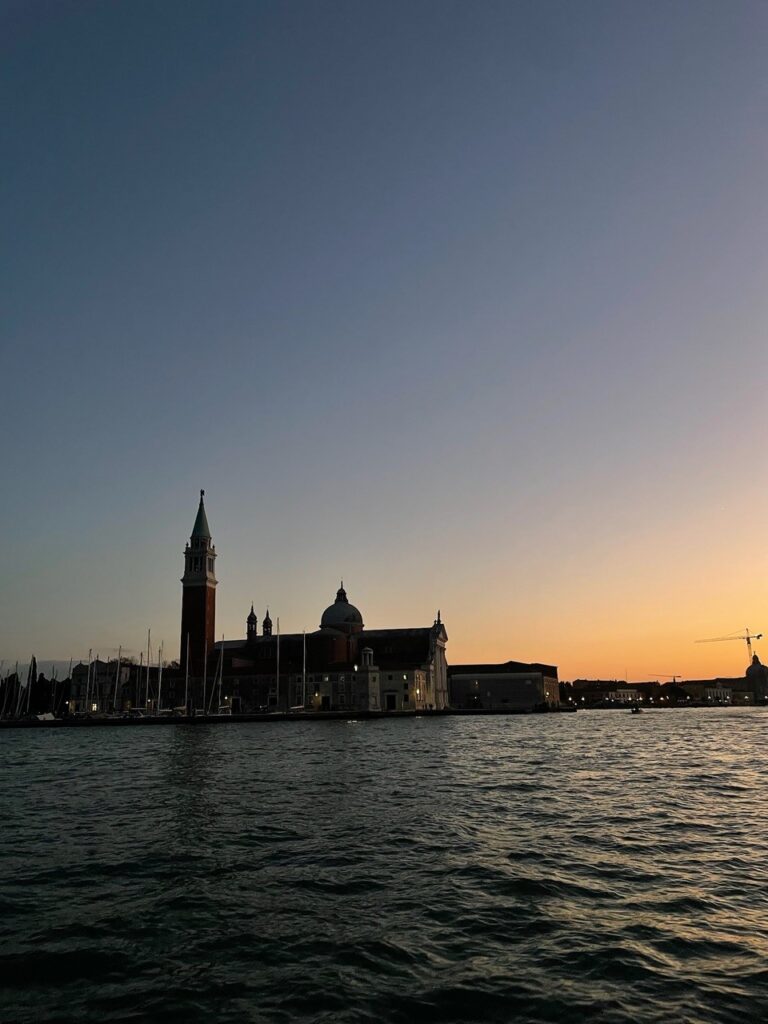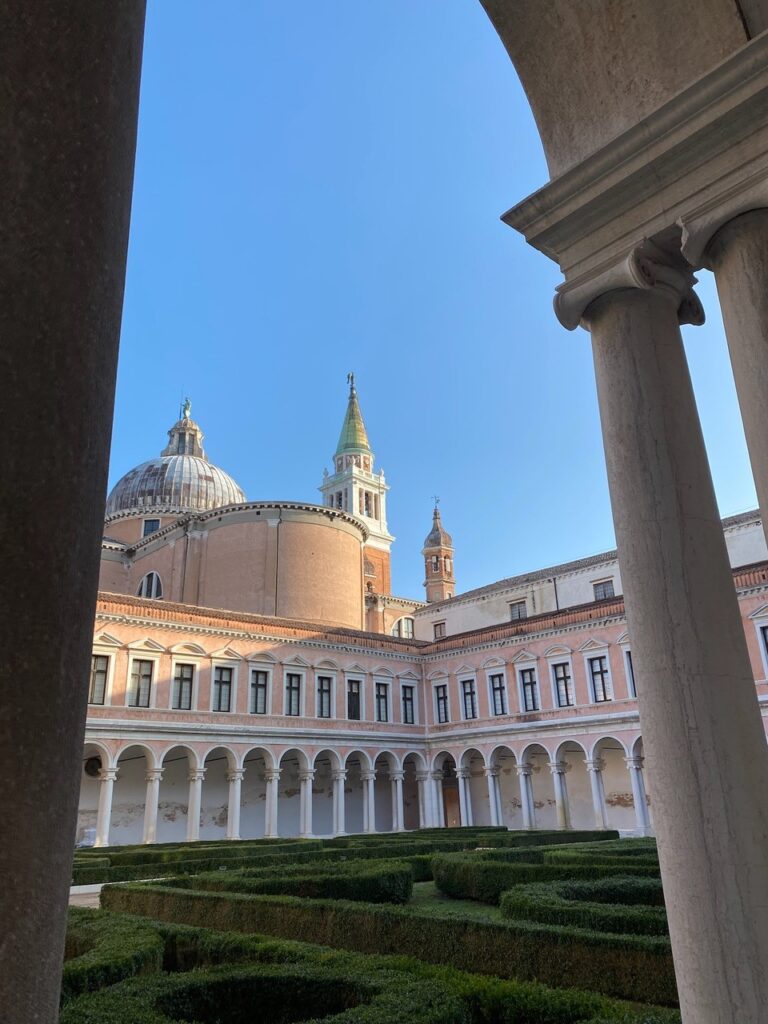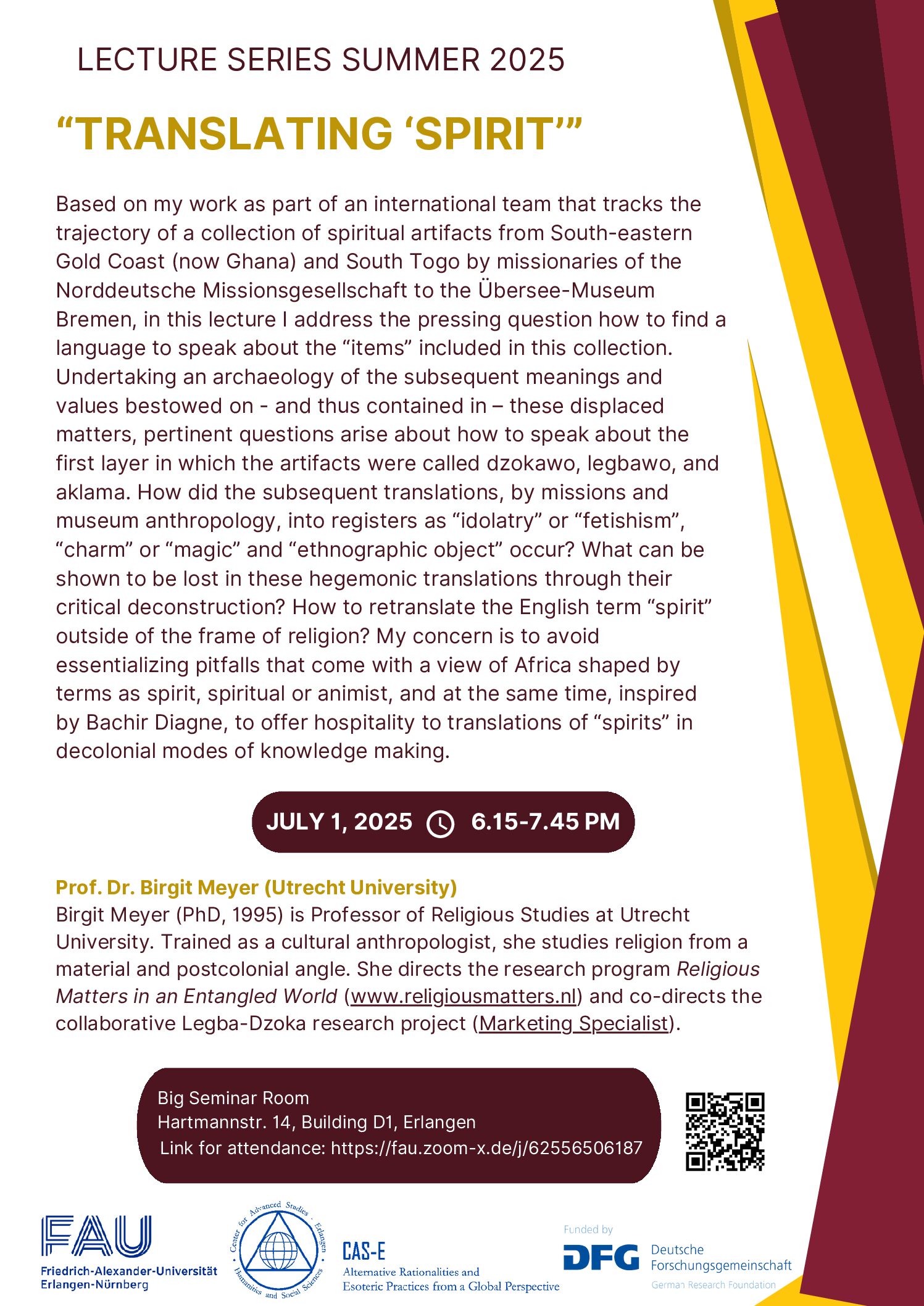By Lina Aschenbrenner
The ropes connecting the vaporetto to the landing platform squeaked, the smell of fuel and brackish water filled the air, the ground swayed under the rolling waves as we carefully took our wobbly steps onto the island of San Giorgio Maggiore in Venice and were greeted by a magnificent view of the illuminated cityscape of Venice at night, full of anticipation and eager expectation for the next days of our special CAS-E conference in November 2024: The Aesthetics of Esoteric Practices.

This time, we have organized the conference together with the Center for the History of Hermetic Philosophy and Related Currents at University of Amsterdam, the Research Network for the Study of Esoteric Practices (RENSEP), and, finally, the Giorgio Cini Foundation (Centre for Comparative Studies of Civilisations)—the institution that has provided us with this more than exceptional conference venue. For this special conference, we deliberately chose the theme of aesthetics to finally create a space in which the sensory dimensions of esoteric practice(s), the sensory reception of the materialities used in the practice(s) and sensory effects of the practice(s) as performance and enactment are explicitly illuminated. Aesthetics in this sense is of course a theme that emerges in every single research project at our center, yet we had never explicitly dealt with processes of sensing and the senses. Thus, the conference became a place for insight (and discussion) about
(1) what (and how) the senses are engaged in the context of esoteric practices,
(2) how these practices affect the senses,
(3) what makes this process of sensory affect so crucial to the individual who participates in a practice and who is sensory affected, and
(4) how the aesthetics of these practices relate to their larger social and cultural impact and function beyond the individual.

For three full days, we heard many different contributions on a multitude of aesthetics in a variety of fields that could be considered esoteric. And yes, the focus on aesthetics seemed to give us a unique angle to look at the material, performative and embodied aspects of all these practices on the one hand, but also a hint at the multiplicity of aesthetics and aesthetic concepts that have existed in different historical, geographical, cultural and social spaces.
For me (this may be subjective), the two keynote presentations that framed our conference brought two additional important aspects and research perspectives to the table: from Ann Taves’ presentation, I take away the importance of sensory training in the context of sensemaking and the perception, embodiment and interpretation of aesthetics. The practice becomes a cultivation of the senses. What I take away from Katharina Wilkens’ lecture is the importance of considering the culturally and practice-specific definitions and understandings of aesthetics, the normativity of the senses and aesthetic-focused research as a way of deconstructing the layered knowledge of experience, of feeling, that springs from this normativity. As Wilkens also said, aesthetics is about understanding the “making of religion” not only the “(praxological) doing of religion”.
Some of the performative content—music and videos—of the lectures was specifically aesthetically impressive in the sense that they not only brought the aesthetics of a particular field of research to life, but also allowed us, the academic audience, to experience and embody aesthetics. Let’s put it this way: aesthetics beyond the linguistic and verbal realm hit differently—perhaps because it is still rather uncommon in our academic disciplines to include it so richly in presentations? In any case, the conference raised interest in the academic importance of extending traditional academic media, i.e. the (English-language) voice, the notorious PowerPoint presentations plus embedded images and video clips. In this sense, the conference included two “performances” in addition to the presentations: On one evening, RENSEP artist grant winner Natasha V. Moody let us in on the aesthetics of her “esoteric art” and, more importantly, her aesthetic approach to producing this kind of art. On another evening, pianist Luca Ieracitano and the constant sound of the waves of the surrounding water transported us to another aesthetic experience, an esoteric musical soundscape in a composition curated by Gianmario Borio, the director of Giorgio Cini’s Institute of Music.
So, the aesthetiscape of the conference was indeed sensory multi-faceted and multi-dimensional! And, as readers of this blog may already have guessed it: the outcome of the conference was a kaleidoscope of different aesthetic impressions and not definitive clarity about esoteric aesthetics.

In the end, we finished our conference with a very fundamental discussion whether a focus on aesthetics really gives us, the researchers, any advantage at all. There are those who believe that everything they need is already covered by practice theory or by all the other research approaches that have emerged since the material turn. What’s more, they don’t see how aesthetic research is possible at all without it being highly subjective, dependent on the sensory impressions and thus culturally and individually standardized of the researchers themselves. At this point, I can only express my own opinion: Especially in the context of contemporary spiritualities, contemporary esoteric practices, the most important and, let’s say, most effective part of the practices takes place in terms of (bodily) experienced transformations, in terms of what makes people stay and repeat the practice, what happens beyond the linguistic, verbal and often even verbalizable realm. Focusing on aesthetics, on the senses as the place where the practices interact with the practitioners, gives us an additional (!) tool to understand what is going on in these practices. This is what makes aesthetic research so important. Of course, aesthetic research is highly dependent on the senses of the researchers themselves, and therefore the normativity of our own senses must also be deconstructed. However, overall aesthetic research is about understanding how practices are designed to affect the senses—again, normativity—and how they actually affect the senses. These findings can then be contextualized with the (sensory and bodily) experiences we have in conversation with participants. Aesthetic research is qualitative research with a specific and very necessary focus when it comes to understanding contemporary culture, society, religion and, yes, esotericism.
The conference proceedings will hopefully reflect the broad spectrum of aesthetic impressions we took home from the conference and shed light on this special and important aspect of esoteric practices but also present our critical debate.
#
Lina Aschenbrenner is a postdoctoral researcher and dance artist based in Germany.
____
CAS-E blogs may be reprinted with the following acknowledgment: “This article was published by CAS-E on May 19th, 2025.”
The views and opinions expressed in blog posts and comments made in response to the blog posts are those of the author(s) and do not necessarily reflect the views and opinions of CAS-E, its founders, its staff, or any agent or institution affiliated with it, nor those of the institution(s) with which the author is affiliated.








